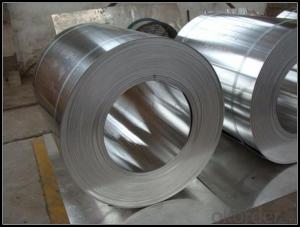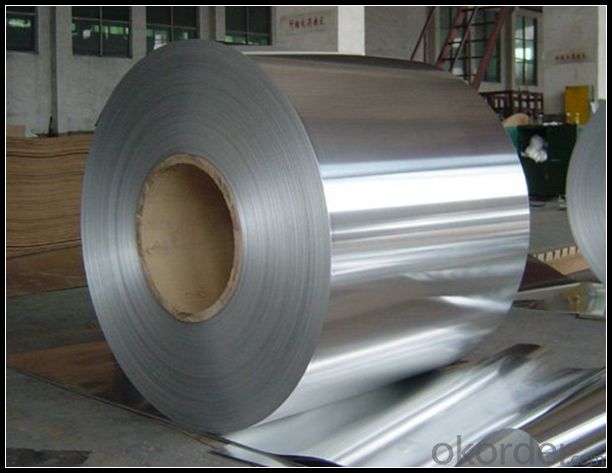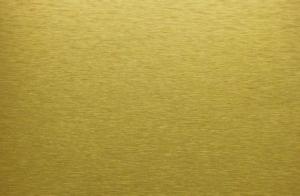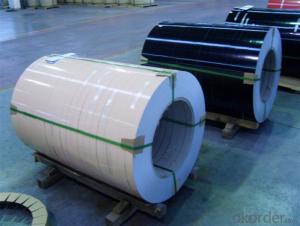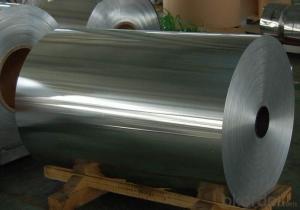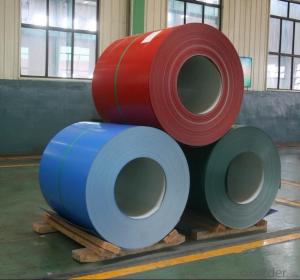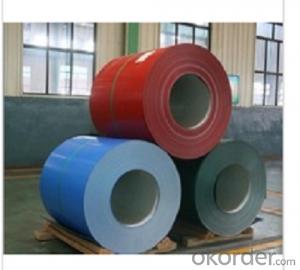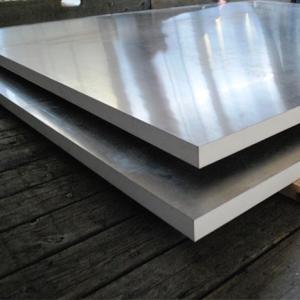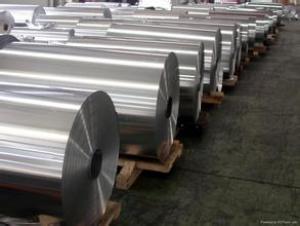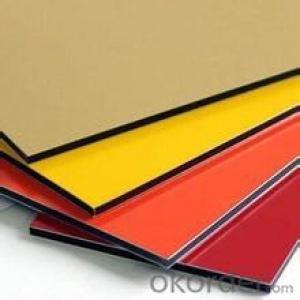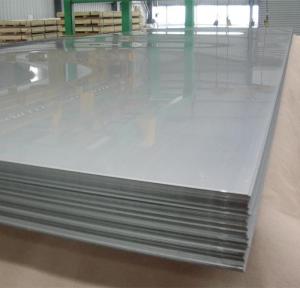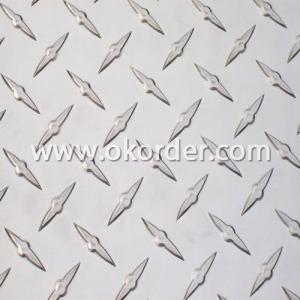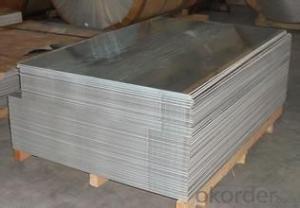Corrugated Aluminum Sheets - 1050 1060 1100 1200 Alloy Color Coated Aluminium Coil 5083
- Loading Port:
- Shanghai
- Payment Terms:
- TT OR LC
- Min Order Qty:
- 5 m.t.
- Supply Capability:
- 1999 m.t./month
OKorder Service Pledge
OKorder Financial Service
You Might Also Like
Specification
1) Alloy | 1050, 1060,1100, 3003 3004 3105 3005 5005 5052 etc |
2) Temper | O/H12/H14/H1/H18/H32/H34/H36/H38//H111/H112/H116/H321/T6/T651/T3/T351 etc |
3) Thickness | 0.1mm to 6mm |
4) Width | 20mm to 3300mm |
5) Coil weight | 100kgs to 6 tons depends on actual requirement |
6) Core material | Aluminum alloy |
7) Coil Inner diameter | 76mm, 152mm,or as required |
2. Application of Aluminum
(1).Interior: wall cladding, ceilings, bathrooms, kitchens and balconies, shutters, doors...
(2).Exterior: wall cladding, facades, roofing, canopies, tunnels,column covers , renovations...
(3).Advertisement: display platforms, signboards, fascia, shop fronts...
3. Feature of Aluminum
1100-H14-DIAMOND EMBOSSED ALUMINUM SHEET
Thickness:1.2mm---4mm,
width:1000mm---1500mm
Product code: 618 a - 33 y titanium matte aluminum plate
Technical parameters
Aluminum alloy/material: 1100
Tensile strength N/was: 115-125
The yield strength of N/was: 150-150
Elongation % : 3 or more
Rainbow degrees: no
Process: light oxidation process
Product description: surface "colored metal silken face" as the main characteristics of the product, completely metal texture, color variety, products can be mild tensile and bending.
Product use: can be used to directly shape stamping, screen printing, thermal transfer two composite process, etc.Used in architectural decoration, household appliances, switch panel, auto parts, lamps lighting, electronic hardware and other industries.
Supply scope of coil or sheet
Mm thickness specification: 0.4 1
Maximum width mm: 1250
The tolerance range
Mm thickness: 0.02 mm
The width of the mm: 2 -
Mm length: 2 -
Actual weight kg: plus or minus 2
Protective film
Protective film on the surface of the aluminum quality assurance period for six months, aluminum is kept dry and ventilated, avoid heat and direct sunlight.If the aluminium material stored in high temperature or direct sunlight can cause protective film, or unable to tear in addition to wait for a phenomenon.
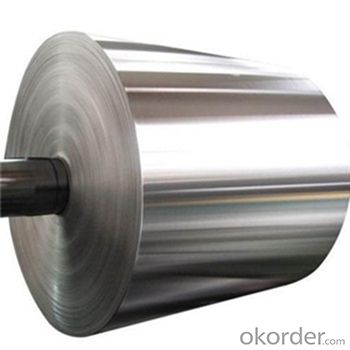
4. Certificate:
SGS and ROHS(if client request, paid by client), MTC(plant provided), Certificate of Origin(FORM A, FORM E, CO), Bureau Veritas and SGS (if client request, paid by client), CIQS certificate
5. Image of Aluminum
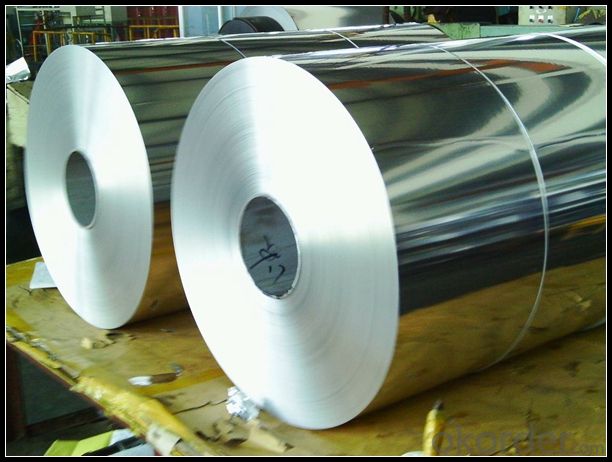
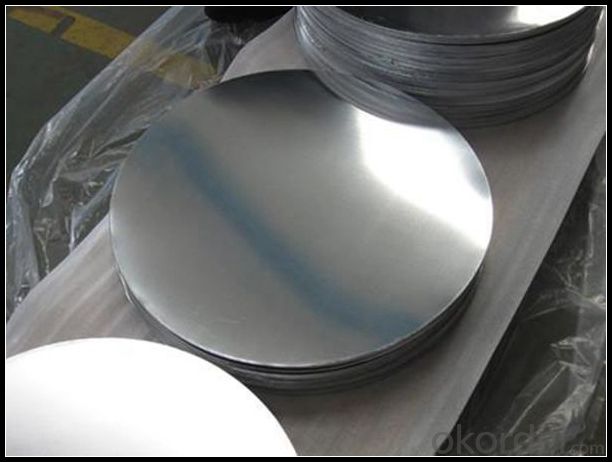
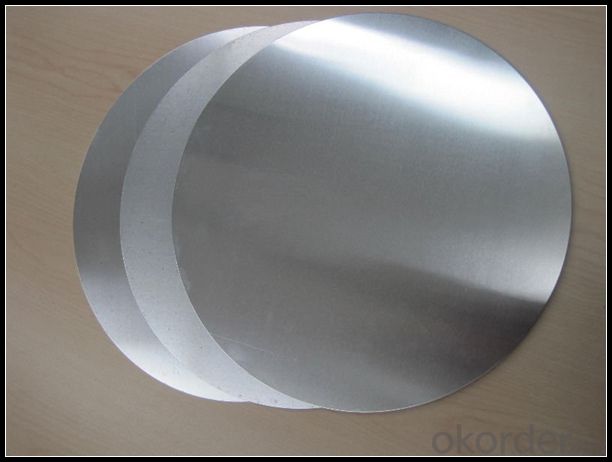
6. Our Service
1. Reply your enquiry in 24 working hours. |
2. OEM, buyer design, buyer label services provided. |
3. Exclusive and unique solution can be provide to our customer by our well traned and professional engineers and staffs. |
4. We can provide free sample for your check |
5. We have the certification of ISO 9001 |
6. Timely delivery |
7. Special discount and protection of sales area provided to our distributor. |
8. Good after-sale service. |
7. FAQ
Q: What is the produce prase? |
A: Normally it would be 40days after received your deposit. |
Q: Can you provide free samples? |
A: Yes, free samples will be sent to you on freight at destination. |
Q: Can I get your latest catalogue? |
A: Yes, it will be sent to you in no time. |
Q: What is the MOQ? |
A: 3 tons |
Q: What are your payment terms? |
A: We accept L/C, D/A, D/P, T/T, West Union,etc. |
- Q: Are aluminum sheets suitable for outdoor use?
- Yes, aluminum sheets are suitable for outdoor use. Aluminum is a durable and corrosion-resistant material that can withstand various weather conditions, making it ideal for outdoor applications.
- Q: Is it possible to utilize aluminum sheets for crafting distinctive architectural structures?
- <p>Yes, aluminum sheets can be used to create unique architectural designs. Known for their strength, durability, and lightweight properties, aluminum sheets are ideal for various architectural applications. They can be easily shaped and cut to fit specific design requirements, offering flexibility in design and construction. Additionally, aluminum's resistance to corrosion and weathering makes it a sustainable choice for long-lasting structures. Architects often use aluminum for facades, roofing, and other exterior elements due to its modern aesthetic and low maintenance needs.</p>
- Q: What is the typical modulus of elasticity of aluminum sheets?
- The typical modulus of elasticity of aluminum sheets varies depending on the alloy and temper. However, a commonly used value is around 70 GPa (gigapascals) or 10 million psi (pounds per square inch). This value represents the stiffness or rigidity of the material, indicating its ability to withstand deformation under applied stress. It is important to note that different grades and conditions of aluminum may have slightly different modulus of elasticity values, so it is recommended to consult the specific material specifications for accurate information.
- Q: What is the surface hardness of aluminum sheets?
- The alloy and treatment process play a role in determining the surface hardness of aluminum sheets, which can vary. In comparison to metals like steel or titanium, aluminum sheets generally have a lower surface hardness. However, heat treatment can enhance the hardness of certain aluminum alloys. For instance, 6061-T6 aluminum sheets exhibit a surface hardness of approximately 95 Brinell, whereas 7075-T6 aluminum sheets have a surface hardness of around 150 Brinell. It is worth mentioning that these values are approximate and subject to variation based on the particular alloy, temper, and processing conditions.
- Q: Are the aluminum sheets suitable for automotive applications?
- Indeed, automotive applications can make use of aluminum sheets. Being a lightweight material with a high strength-to-weight ratio, aluminum proves to be an excellent choice for the automotive industry. Its attributes lend themselves well to this industry, offering numerous benefits such as enhanced fuel efficiency, improved handling, and increased performance. Furthermore, aluminum's resistance to corrosion is advantageous for automotive applications, as it contributes to the longevity of vehicles. Furthermore, aluminum sheets possess the ability to be easily shaped and molded into various forms, which grants automotive manufacturing greater design flexibility. In conclusion, the utilization of aluminum sheets in automotive applications has gained popularity due to their myriad advantages and their positive impact on vehicle performance and sustainability.
- Q: I have to repair a cracked aluminum engine block. What alumunum epoxy should I use?
- Best Epoxy For Aluminum
- Q: Are aluminum sheets resistant to staining?
- Yes, aluminum sheets are resistant to staining. Aluminum has a natural oxide layer that forms on its surface when exposed to air. This oxide layer acts as a protective barrier, preventing staining and corrosion. However, it is important to note that prolonged exposure to certain chemicals or acidic substances can still cause discoloration or staining on aluminum sheets. Regular cleaning and maintenance are recommended to preserve the appearance and longevity of aluminum sheets.
- Q: I am ultimately looking to have a bike that is good for both everday commuting and touring with panniers/racks long distance with camping. From what I've read on the internet steel frames are more forgiving and ride smoother. The guy at my local bike shop tells me aluminum frames have more flex and ride better. I don't know if he's just trying to make a sale (Giant dealer) or to trust him, unfortunately the staff there are all just racers not tourers. If you can recommend any brands/models to check out that'd be good. From my research thus far I am in love with Co Motion bikes, just not the price! I'm looking at $1000 max for a good touring bike. Thanks!
- The two previous bikes lack brazeons for rack mounts up front, so they don't seem suitable for heavy, loaded touring expeditions. But, I don't see any models by Giant that have front rack brazeons. Actually, their forks all appear to be carbon/composite. I agree that the Co-Motion products look great, but their prices do seem a bit high for a welded frame, even if it is made in the US. The Surly LHT would make an extremely rugged, steel tourer. But building it up to your desired specs would likely put you way over your limit.
- Q: How do you form curves or shapes in aluminum sheets?
- There are several methods to form curves or shapes in aluminum sheets. One common technique is called bending, where the sheet is clamped and then gradually bent using a mechanical press brake or a hammer. Another method is called roll forming, which involves passing the aluminum sheet through a series of rollers to achieve the desired shape. Additionally, aluminum sheets can be molded or pressed into curves or shapes using specialized tools or dies.
- Q: Can aluminum sheets be used for lithographic printing plates?
- Yes, aluminum sheets can be used for lithographic printing plates. Lithographic printing is a method that uses the principle that oil and water do not mix. A lithographic printing plate is made of a metal base, typically aluminum, which is coated with a photosensitive layer. This layer is then exposed to light, creating a pattern that can be used for printing. Aluminum is a preferred material for lithographic printing plates due to its excellent properties. It is lightweight, yet strong and durable. It also has a smooth surface, which is crucial for achieving high-quality prints. Additionally, aluminum has good thermal conductivity, which aids in the fast drying of ink during the printing process. Furthermore, aluminum is easily processed and can be chemically treated to enhance its surface properties, such as making it more hydrophilic or hydrophobic. This allows for better control of the ink and water balance on the plate, resulting in sharper and more precise prints. In summary, aluminum sheets are commonly used for lithographic printing plates due to their desirable properties and suitability for the lithographic printing process.
Send your message to us
Corrugated Aluminum Sheets - 1050 1060 1100 1200 Alloy Color Coated Aluminium Coil 5083
- Loading Port:
- Shanghai
- Payment Terms:
- TT OR LC
- Min Order Qty:
- 5 m.t.
- Supply Capability:
- 1999 m.t./month
OKorder Service Pledge
OKorder Financial Service
Similar products
Hot products
Hot Searches
Related keywords
